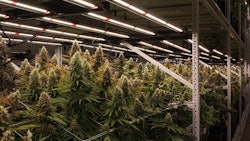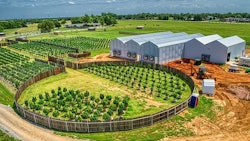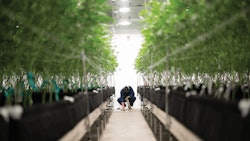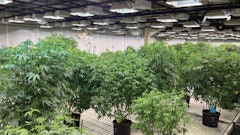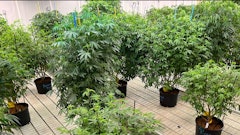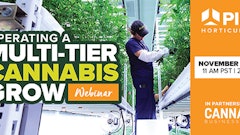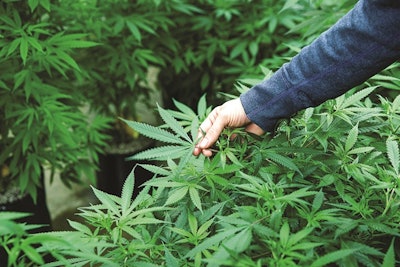
Mergers and acquisitions are now commonplace in the cannabis industry. In the U.S., multistate operators (MSOs) can rapidly become dominant players by acquiring licenses or functioning operations in every legal state. Even smaller businesses have reason to expand operations within individual states to meet demand or prepare for impending federal legalization.
If not done correctly, however, acquiring or expanding to multiple sites can leave cannabis companies with excess expenses, inefficiencies and compliance issues. Managing numerous independent cultivation sites that have little in common is akin to herding cats: It’s a tricky exercise, and a few inevitably veer off course from the company’s core principles. Companies that manage multiple grow sites (and those that will soon find themselves with that responsibility) should consider the following advice to ensure their efforts work toward a successful and profitable endeavor.
1. Select site managers carefully
MSOs need a competent individual at the helm of each site to execute the company’s cultivation strategy and help guide the entire team toward hitting production targets. The person running day-to-day cultivation operations can make the difference between a successful grow site and a wasted investment. The type of grow site should strongly influence the kind of manager a cultivator selects.
For instance, most MSOs pursue a mixture of growing strategies, whether indoor, greenhouse and/or outdoor. While there are plenty of similarities in growing cannabis in any situation, the skill set required to successfully manage commercial cultivation can vary greatly depending on the environment. Consider, for example, a cannabis business that has been cultivating indoors but is now seeking to grow hemp outdoors. While it may be tempting to promote from within, placing an experienced indoor grower in the middle of a hemp field may not be a wise choice.
The process of cultivating cannabis indoors is quite different from open-field crop management. Indoor growers are usually concerned with environmental factors such as grow-light performance, and humidity and temperature management. With outdoor cultivation, none of that matters. Outdoor growers are more concerned with damaging weather, pesky animals and using the right tractor implements. The jump between these two work experiences is quite vast, and hiring for experience in these instances could make the difference between a successful operation and a costly learning experience.
2. Be available
Open communication and regular site visits are critical tools in the successful management of multiple grow sites. If a company’s cultivation director never shows up, won’t return email and seldom answers the phone, site managers who rely on his or her leadership will be forced to go it alone. Apart from the potential deterioration of the cultivation program, this situation could foster an adversarial relationship between the site manager and the director of cultivation. Avoid this situation by making yourself available, both on-site and remotely, to all site managers.
Key employees should feel empowered to communicate with their boss, regardless of the issue. Since site managers and section growers spend 40 or more hours each week tending crops and managing production, they have their fingers on the pulse of what’s happening at the grow site. A trusting and open relationship will increase the chances of catching problems early, before they lead to a crop loss. Cultivation directors who are constantly on the move should consider holding virtual office hours to ensure communication lines remain open.
Talking is important, but it’s no substitute for on-site visits. To truly understand what’s happening with a crop, a cultivation director needs to see, touch and sometimes even smell what is going on. Site visits provide this opportunity, as well as a chance for training, troubleshooting and employee feedback. If things aren’t going so well, site visits also can boost team morale. A site visit every two weeks is ideal—more frequently might be overkill, while less frequently may allow potential problems to spiral out of control.
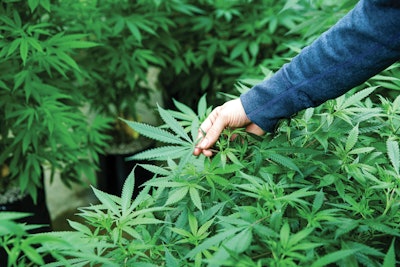
3. Be consistent across all sites
Strive to have every cultivation site operate as similarly as possible, much like a franchise store or restaurant. With a franchise, every site and every experience is identical, regardless of location. Cultivation operations at multisite grow-ops should be no different. The more cultivation sites resemble one another, the more productive and cost efficient the entire company will be.
Production is streamlined when you don’t have to reinvent the wheel at each site. Crop scheduling is easier if the same genetics are grown at every location, and troubleshooting is simplified when all sites use the same growing method, equipment and inputs. Company-wide standard operating procedures are easier to write and enforce when each site follows the same processes. Shuffling growers between sites to fill staffing shortages holds little risk if there are no major differences between cultivation sites.
Critical activities, such as purchasing and facility maintenance, also can benefit greatly from the standardization of all grow sites. If each facility uses the same cultivation materials, purchasing can be centralized to take advantage of bulk discounts. And, if one site runs out of an important item, there is the option to borrow from another site instead of incurring the downtime associated with waiting on an order. Maintenance of critical grow equipment, such as trim machines or dehumidifiers, is easy to schedule and perform when all sites use the same manufacturer and model.
4. Encourage and provide cross-training
A company with multiple grow sites can be an excellent learning platform for the entire cultivation team. Oftentimes, growers get so immersed in their individual cultivation challenges that they seldom come up for air to gain a fresh perspective. Visiting other facilities within the same company can help growers break out of their daily routines and provide new ideas for tackling common issues. Learning is streamlined since growers can gain valuable knowledge from their coworker’s lessons without having to commit the same mistakes themselves.
Short visits or work exchanges between growers at different sites can be especially insightful when indoor growers spend a few days at a greenhouse operation or vice versa. While the specifics of growing may differ between each site, the challenges that growers face are universal: Pest infestations, disease pressure and nutrient problems plague every kind of grow operation. Seeing firsthand how growers at other sites tackle these issues can help strengthen the visiting grow team’s capacity to prevent or mitigate similar problems at its home site.
Cross-learning also can benefit new employees. If one site stands out from the rest in terms of efficiency or quality, select that site as a training center or boot camp. Have new recruits learn the ropes through orientation and hands-on training with experienced staff. This process will ensure consistent training and help ensure company-wide harmonization of protocols, policies and culture.
5. Be suspicious when ‘everything’s fine’
If feedback from one or more site managers is that “everything’s fine,” cultivators may be tempted to skip their regularly scheduled site visit. This would allow them to catch up on some much-needed office time or spend extra days at a site that may be struggling. They may also revel in the fact that their production sites are becoming more self-sufficient and that the workers they have put in place are doing their jobs.
But walking a crop that nobody is concerned about is just as important as walking a crop that everyone is concerned about. Cultivation directors typically have experience growing commercial crops and bring a seasoned and valuable perspective to the job site. They are well aware that although things are not bad now, conditions may be ripe for creating issues that are not obvious to others, and their expertise can help prevent these problems from coming to fruition.
For example, it’s common to find plants that are too dry at the end of the day. The grower may be afraid of adding too much moisture to the growing environment late in the day, or the plants may be growing rapidly, and a previous irrigation simply is not enough to hold them over. Damage may not be visible now, but based on experience, cultivators know that chronically dry plants can result in leaf damage, reduced productivity and increased susceptibility to insects and disease. If dry plants are noticeable during a walk through, a cultivator’s intervention in this scenario can help prevent this situation from damaging a crop that no one is concerned about.
Just because the site manager or section grower is content doesn’t mean that cultivation directors should be, too. By staying engaged with the activities at each site, cultivators can minimize M&A integration challenges and maximize bottom-line opportunities.









